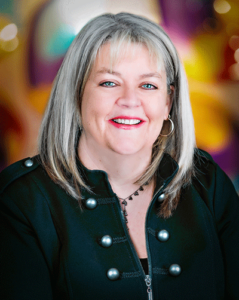As I gasped through the end of my workout recently, I reflected on the conversation I had with my coach prior to the start. We were using kettlebells, and I was unsure of which weight to select. His feedback to me added clarity as to the purpose of the kettlebell. I needed a weighted kettlebell that would push my aerobic threshold. He first coached me to decide whether to lift over my head or straight out 90 degrees from my torso. Since we decided to do the 90-degree lift, I proceeded to grab the weighted kettlebell that was just a bit heavier. He interrupted me and said, “Grab the heavier one.” Together, we negotiated the logistics that would provide me the greatest outcome and benefit, allowing me to perform at a level I would not have achieved alone. With the expertise and guidance from the coach who knew me well, the workout plan was executed for maximum capacity.
I have served as an instructional coach for 25 of my 30 years in education, and not a year goes by that I don’t share a conversation with fellow coaches about what it means to coach. The most common sentiment I hear is, “People rely on athletic coaches to help them get the most out of a workout, so it makes perfect sense for educators to work with instructional coaches to get the most of out their teaching.”
Instructional coaching is no different than coaching athletics, aside from the content. Yet, there exists a false dichotomy of when to “tell” and when to mediate thinking. I propose both must exist to move teachers beyond a single moment in time in order to create new, sustained habits. “A theory that denies that thoughts can regulate actions does not lend itself readily to the explanation of complex human behavior.” (Bandura, 1986, p 15) Donohoo J. Collective Efficacy 2017 Corwin Press page 7
In my example above, my CrossFit coach consulted with me for the workout in the moment. However, he was also able to mediate my thinking so I better understood how weights could actually push an aerobic threshold. This information will help me navigate my decisions in the future so I can build sustainable workout habits. Educators have instructional actions and curriculum to implement for students, but these actions must become habitual and refined as time passes. Consulting in the moment will allow the coach and teacher to execute that moment in time, but it may not ensure future adjustments. Because the coach cannot spend every minute with the teacher, supporting the teacher’s awareness and ability to monitor progress will build a foundation of intentional decisions in response to students’ needs.
Consider the metacognition of coaching:
- Awareness – Does the person being coached have an awareness of the causal relationship between his/her action and the impact?
- Action – Does the person being coached have clarity in the action he/she is being asked to take? Does he/she have clarity as to why this action is appropriate in this moment?
- Adjust or Adapt – Does the person being coached feel flexible in order to adjust the action for maximum impact? For example if students are confused about the planned action, can the teacher adjust based on their understanding of why the students are confused?
- Automaticity – Does the person being coached realize what part of the action will transfer to future situations? Is it becoming more natural for him/her to engage in the cycle of implementation with adjustments?
If we revisit my original example with my CrossFit coach, each of the A’s above were present in his support of my performance.
- Awareness – He helped me identify the key movements for the workout and relate those movements to my desired performance.
- Action – I understood how high I was going to lift the kettlebell and the impact it would have on my aerobic capacity.
- Adjust – He directed me to select a heavier kettlebell since we limited the movement to a 90 degree swing.
- Automaticity – Because he connected the purpose of the weight and the level of swing to my aerobic threshold, I would be able to consider this in future workouts, even if he was not the coach.
Despite the many models and beliefs of coaching, I invite you to consider these four “A’s” when planning for your next coaching conversations. Gallwey defines coaching as, ‘…helping them learn rather than teaching them.’ Coaching for sustained habits is a gift to the person being coached. It will help your coaches learn about themselves more deeply and send positive messages about your belief in their potential.

